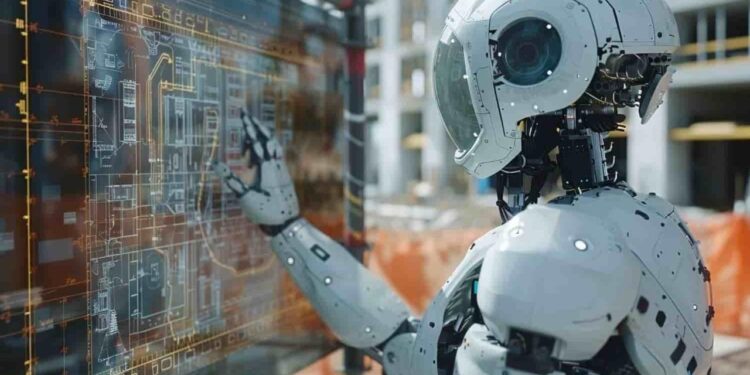Polyfunctional robots are sophisticated automated systems designed to perform a broad range of tasks without the need for reprogramming or significant hardware changes. They combine multiple sensors, artificial intelligence (AI), and advanced mechanical structures to switch between tasks seamlessly.
These robots can adapt to changing environments, learn new skills via machine learning, and collaborate safely with human workers, making them invaluable in modern industry.
Key Technologies Driving Polyfunctional Robots
The functionality of polyfunctional robots hinges on the integration of several cutting edge technologies:
A. Artificial Intelligence (AI)
AI empowers robots with decision making capabilities, allowing them to learn from data, recognize patterns, and improve performance over time.
B. Machine Learning (ML)
ML enables robots to acquire new skills autonomously by analyzing experience and adapting to new tasks without manual reprogramming.
C. Advanced Sensors
Sensors such as LIDAR, cameras, tactile sensors, and ultrasonic detectors provide spatial awareness and precise control.
D. Robotic Operating Systems (ROS)
These systems allow integration of hardware and software modules for flexible, real time control of multiple functions.
E. Collaborative Robot (Cobot) Design
Cobots are designed to work safely alongside humans, equipped with force sensors and compliance mechanisms to avoid injuries.
F. Modular Hardware Architecture
This allows robots to be reconfigured physically or digitally to switch between different toolsets or operational modes.
How Polyfunctional Robots Are Transforming Industries
The ability to perform multiple tasks and adapt on the fly enables polyfunctional robots to impact a wide array of sectors:
A. Manufacturing and Assembly
Polyfunctional robots have moved beyond simple assembly line tasks. They can:
-
Inspect quality using computer vision.
-
Handle various product components.
-
Perform complex assembly steps.
-
Adapt production lines to new products without downtime.
B. Logistics and Warehousing
In logistics, these robots are changing the game by:
-
Sorting and packing different package types.
-
Navigating warehouse layouts dynamically.
-
Collaborating with humans for order fulfillment.
-
Handling returns and restocking efficiently.
C. Healthcare and Medical Services
Robots assist healthcare professionals by:
-
Performing repetitive tasks like sample handling.
-
Assisting in surgeries with precision.
-
Delivering medications within hospitals.
-
Supporting patient care and monitoring.
D. Agriculture and Farming
Robots in agriculture now:
-
Monitor crops using multispectral imaging.
-
Perform planting, weeding, and harvesting.
-
Adapt to various crop types and terrains.
-
Reduce reliance on manual labor.
E. Service and Hospitality
In customer facing environments, polyfunctional robots:
-
Act as receptionists and concierges.
-
Clean and sanitize spaces autonomously.
-
Deliver food and beverages.
-
Provide information and support in multiple languages.
Benefits of Polyfunctional Robots in the Workforce
The adoption of these robots provides multiple advantages:
A. Enhanced Efficiency
Robots capable of switching tasks reduce downtime and increase operational throughput.
B. Cost Savings
By performing multiple roles, fewer units are needed, lowering capital expenditures.
C. Improved Safety
Robots take over hazardous or repetitive tasks, minimizing workplace injuries.
D. Scalability
Modular designs allow businesses to scale operations easily by updating software or hardware modules.
E. Workforce Augmentation
Robots complement human workers, handling menial tasks and allowing humans to focus on strategic activities.
Challenges to Polyfunctional Robot Integration
Despite their potential, several challenges slow widespread adoption:
A. High Initial Investment
Cutting edge technology and modular hardware can be costly upfront.
B. Complex Programming and Maintenance
Developing versatile software and maintaining multifaceted robots requires specialized expertise.
C. Workforce Resistance
Fear of job displacement can lead to reluctance in accepting robotic collaboration.
D. Safety and Regulatory Compliance
Ensuring that multifunctional robots meet stringent safety standards in dynamic environments is complex.
E. Interoperability Issues
Integrating robots with legacy systems and varied industrial equipment poses technical difficulties.
Case Studies: Polyfunctional Robots in Action

A. Tesla’s Gigafactories
Tesla uses polyfunctional robots to handle various tasks from battery assembly to vehicle painting and quality inspection, reducing production bottlenecks and enhancing precision.
B. Amazon Robotics
Amazon’s warehouses employ versatile robots capable of fetching, sorting, and packaging items in a single unit, vastly improving fulfillment speed and accuracy.
C. Surgical Robots at Mayo Clinic
Robotic assistants in surgeries perform delicate tasks and adjust roles mid operation, supporting surgeons and improving patient outcomes.
Future Outlook: The Road Ahead for Polyfunctional Robots
The future of polyfunctional robotics is promising, driven by ongoing advancements in AI, sensor technology, and network connectivity:
A. Integration with 5G and Edge Computing
Real time data processing at the edge will enhance robot responsiveness and coordination.
B. Greater Human Robot Collaboration
Improved safety features and intuitive interfaces will foster seamless teamwork.
C. Autonomous Decision Making
Robots will increasingly handle complex problem solving tasks independently.
D. Expanded Use in Small and Medium Enterprises (SMEs)
Lower costs and cloud based control platforms will make advanced robotics accessible beyond large corporations.
E. Sustainability and Green Manufacturing
Robots optimized for energy efficiency will contribute to eco friendly production methods.
How Content Creators Can Leverage Polyfunctional Robots Trend
The rise of polyfunctional robots opens up lucrative opportunities for digital content creators focusing on technology niches:
A. SEO Optimized Articles
Publish in depth guides, news updates, and case studies using high traffic keywords like “polyfunctional robots,” “industrial cobots,” and “robot workforce automation.”
B. Video Tutorials and Reviews
Create video content demonstrating robot applications, software tutorials, and equipment reviews to engage visual learners.
C. Monetization Through Google AdSense
High value keywords in this niche typically yield better CPC rates. Combine articles with affiliate links to robotics products for dual revenue streams.
D. Social Media Engagement
Use platforms like LinkedIn, Twitter, and YouTube to build authority in the robotics sector.
E. Webinars and Online Courses
Offer paid educational content on robot programming and integration, tapping into growing demand.
Polyfunctional robots are transforming the workforce by combining flexibility, intelligence, and adaptability in ways traditional robots never could. As these machines continue to evolve, they will become indispensable partners to human workers across industries.
For businesses, embracing these technologies promises greater efficiency and safety. For content creators and marketers, the robotics revolution presents a powerful niche to attract traffic, maximize SEO potential, and boost AdSense earnings.
Understanding the technological, economic, and social dimensions of polyfunctional robots will be key to thriving in this new era of automation.













